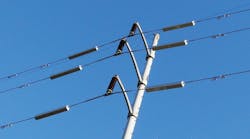Renovating Aging Electric Utility Grid Infrastructure with New Technology
Fixing up our infrastructure provides a great opportunity to use ‘new’ technologies that have been developed over the last several decades. The alternative is to stick with past practices and face continual degradation of the grid as hurry-scurry patchwork is done for increasing emergencies.
The U.S. has provided the best power quality and value in the world. Our grid systems evolved into a stable, maintainable national resource by partnering with manufacturers to develop standardized products. If something breaks or ages past its useful life, we replace it with its twin or at least its operational equivalent. That’s been the safest, cheapest thing to do and it made technical and financial sense.
Now those practices are changing. They have to. Our industry has new challenges. But we also have new tools, new technologies, and we’re going to need all of them.
Replacing aging distribution components, many of which are well over 25 years old, gives us an opportunity to fix a lot of things that keep distribution engineers awake at night. A major example is rooftop solar which creates challenges that were undreamed of a decade ago – control of reverse power flow being the biggest issue at the local level. At the system level the intermittency of solar is starting to cause real problems, particularly in areas where rooftop solar has grown by leaps and bounds, such as California. (see Solar Will Shine Brighter With Smart Inverters).
Even more esoteric, there’s recent evidence that the distribution system can develop instabilities similar to the transmission grid, but at much higher frequencies. Researchers in California are using high time-resolution syncrophasors and finding unexpected results. As the distribution system becomes more complex, with distributed resources, it’s beginning to look like a scaled down transmission system. And interconnections between microgrids, should that paradigm ever be significantly realized, will look similar to interconnections between utility systems.
All this will most likely lead to the use of smart distribution transformers, maybe solid state transformers, or even AC-DC-AC converters similar to the ones available for high voltage transmission systems.
Using smarter, functionally flexible components, will make the distribution system robust - ready to face unpredictable and changing demands.
Then there’s the transmission system which needs more flexibility to handle power flows that are no longer solely determined by seasonal loads and conventional generation. Wind farms and large scale solar require extension of the existing grid, causing instability and thermal issues. There’s the growing use of demand management as a major ‘generation’ (negawatt) resource. And, of course, there’s the plain vanilla need to increase line capacity as load grows.
Fortunately we are ahead of the game with transmission. We have plenty of technology waiting in the wings that can help. Thermal capacity can be surprisingly increased through the deployment of dynamic thermal rating technology. Phasor measurement units (PMU) can quickly detect instabilities before they get out of hand. And of course, we have the available (but expensive) flexible AC transmission system technologies (FACTS) which can be placed at critical grid points to increase non-thermal capacity and stabilize the network.
For both distribution and transmission there are also a whole range of sensor technologies that can monitor everything from transmission tower stress to tap changer wear. Sensors, smart components, high capacity communications systems – it’s becoming possible to monitor and control every aspect of the system. ‘Big data’ is becoming more than a catch phrase.
The basic research has been done and even many of the devices that are needed for emerging transmission and distribution issues were developed by manufacturers, universities, EPRI and the utilities themselves, years, even decades ago. Several of us old timers at T&D World helped pioneer some of these nuances. Some were piloted on a small scale and the results packaged in reports that died of old age on shelves. There just wasn’t enough reason to risk trying new methodologies and technologies that hadn’t met the test of time. Much of that risk still remains. But now we’re running out of time.
The whole smart grid initiative gave the industry a kick start (or maybe a kick in the nether regions) and a few utilities are entering the brave new world. More will follow.
Still, new methods, new devices require that regulators and customers accept the risk, at times, of lower reliability as the system is upgraded. Some nuances won’t work as planned or will break.
Then there’s the financing challenge. This isn’t a great time to raise rates, and regulators are understandably cautious after the spotty ratepayer revolt over smart meters that didn’t seem to add immediate value to their service quality. Hopefully we learned our lesson.
We’d better treat our customers as ‘smart partners’ as we build a ‘smart system’.
By the way, if you haven’t read it yet, check out the remarkable December T&D World supplement Our Ubiquitous Dynamic Grid. Gene Wolf’s prize-winning articles give the best overview of some of these enabling technologies that I’ve ever read.


